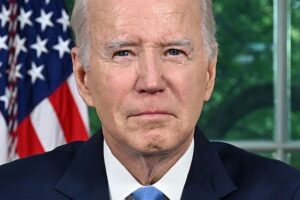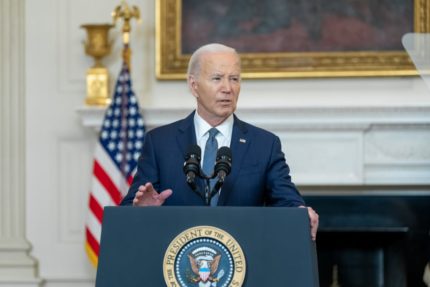The US trade deficit experienced a substantial increase in April 2024, reaching its highest level since October 2022. According to a report released by the Commerce Department on Thursday, the trade deficit surged to $74.6 billion in April, up from a downwardly revised $68.6 billion in March. This significant rise reflects a notable imbalance between the value of imports and exports, with imports increasing considerably more than exports.
Economists had predicted an even wider deficit of $76.1 billion, which would have been a significant jump from the originally reported $69.4 billion for March. Although the actual deficit was narrower than expected, it still marked the largest trade gap since the $75.3 billion deficit recorded in October 2022. The sharp increase in the trade deficit underscores ongoing challenges in balancing trade flows and highlights the impact of fluctuating economic conditions on international trade.
Surge in Imports Drives Deficit Expansion
The primary driver behind the widening trade deficit was a substantial increase in the value of imports, which surged by 2.4 percent to $338.2 billion in April. This follows a 1.5 percent decline in March, indicating a rebound in import activity. The spike in imports was largely fueled by a sharp increase in automotive vehicles, parts, and engines, signaling robust demand in the automotive sector.
In addition to automotive imports, there was significant growth in imports of capital goods such as computer accessories and telecom equipment, as well as industrial supplies and materials, including crude oil. This diverse increase in imported goods highlights strong consumer and industrial demand, which has been a critical factor in the expansion of the trade deficit.
Mixed Performance in Export Growth
While imports saw a significant increase, the growth in exports was more modest. The value of US exports climbed by 0.8 percent to $263.7 billion in April, following a 1.7 percent decline in March. This uptick was driven by increases in the export of capital goods and pharmaceuticals. However, these gains were partly offset by a decrease in exports of industrial supplies and materials, indicating some sectors are still struggling to regain their footing in international markets.
Additionally, the report highlighted a widening goods deficit, which increased to $99.2 billion in April from $93.3 billion in March. Meanwhile, the services surplus, which includes trade in services such as travel, finance, and intellectual property, narrowed slightly to $24.7 billion from $24.8 billion in the previous month. This mixed performance in both goods and services exports emphasizes the complexity of the current trade environment and the varied impact on different sectors of the economy.
Shift in US-China Trade Dynamics
Amid the broader trade trends, the goods deficit with China, a focal point of US-China economic tensions, decreased by $2.5 billion to $22.1 billion in April. This reduction was primarily driven by a decline in imports from China, reflecting shifts in trade patterns and possibly the impact of tariffs and trade policies implemented in recent years. The decrease in the deficit with China stands out in the context of overall rising trade deficits, highlighting a nuanced shift in bilateral trade dynamics.
The reduction in imports from China could signal a strategic pivot by U.S. businesses towards diversifying their supply chains. This move is part of a broader trend influenced by geopolitical considerations and the ongoing trade war between the world’s two largest economies. The evolving trade relationship with China remains a critical aspect of the US trade strategy, with implications for economic policy and international relations.
The widening U.S. trade deficit in April underscores the complex interplay between robust domestic demand and challenging global economic conditions. The decline in the goods deficit with China adds another layer to the trade narrative, reflecting strategic shifts in response to broader economic and geopolitical factors. As policymakers and investors navigate these dynamics, the implications for future economic growth and stability remain a key area of focus.














